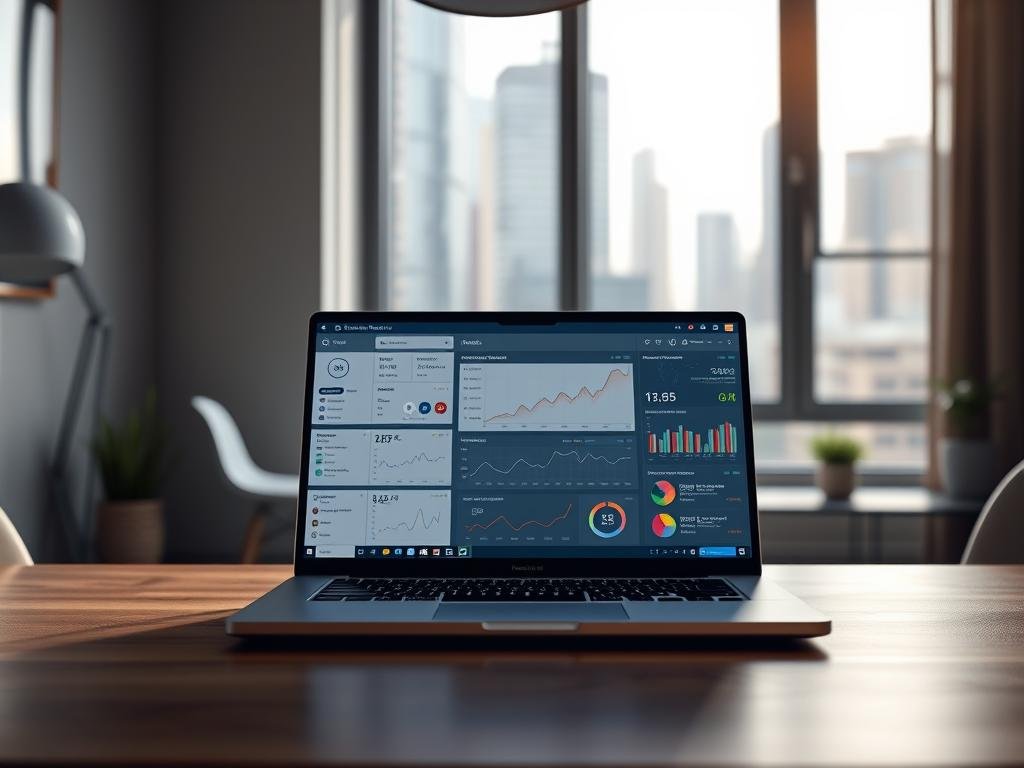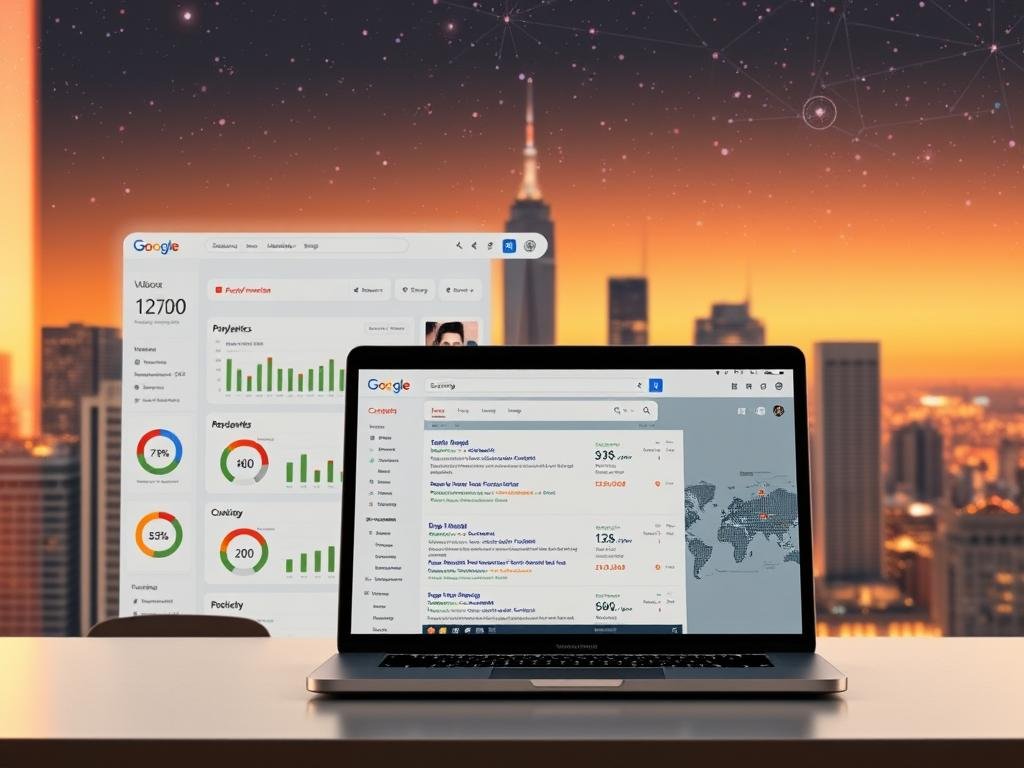
How to Track Your Google Rankings Without Spending a Dime
Tracking your Google rankings is crucial for boosting your website's visibility. You don't need to spend money to see how your site ranks in search results. Tools like Google Search Console and Ubersuggest give you free data to check your keyword performance.
Understanding your rankings helps you fine-tune your SEO strategies. This can increase organic traffic and help you reach more users.
Knowing your position in search results tells you what's working and what's not. Free solutions give you insights into which keywords attract traffic and how competitors fare. By checking these metrics regularly, you can adjust your content to match search trends and user demand.
Key Takeaways
- Free tools like Google Search Console let you track keyword rankings.
- Monitoring rankings helps identify top-performing keywords and content gaps.
- Organic traffic growth depends on consistent tracking and SEO adjustments.
- Competitor analysis through free platforms reveals opportunities for improvement.
- Regular updates to your content ensure long-term visibility in Google search results.
Introduction to Google Rankings
Google rankings show where your website stands in search results. A higher spot means more people see your site, leading to more visitors and potential customers. SEO is key to boosting these rankings. Let's dive into how rankings work and why they're important.
Understanding Search Engine Optimization (SEO)
SEO makes websites better for search engines. It includes finding the right keywords, creating quality content, and making sites fast. For example, using keywords naturally in headlines makes your site more relevant. Tools like Google Search Console help improve these efforts.
| Manual Tracking | Automated Tools |
| Incognito browsing to check rankings | Best Google ranking tools like Ubersuggest or Ahrefs |
| Time-consuming and error-prone | Automate data collection and analysis |
Importance of Tracking Your Rankings
“Rankings are a live indicator of online success.”
Not tracking rankings means missing chances to tweak strategies. Regular checks show trends, like sudden drops or keyword changes. The best Google ranking tools make this easier, offering insights into competitors and traffic sources. For example, tracking rankings helps find which keywords bring in the most visitors, guiding content updates.
Free Tools for Tracking Your Google Rankings
Start tracking your Google rankings for free with the right tools. Many free platforms make it easy, giving you data to boost your SEO. You can see how your keywords rank, track traffic, and check out what your competitors are doing.
Google Search Console
Google Search Console (GSC) is a top free tool from Google. It shows how your site does in search results, with details like clicks and rankings. The Performance report shows your best keywords and where you can improve.
Watch trends over time to tweak your SEO plans.
Ubersuggest
Ubersuggest offers free rank tracking for up to 10 keywords. It shows your current rankings and how hard it is to rank for certain keywords. It also suggests new keywords to add to your SEO plan.
It's perfect for small businesses or those just starting out.
SERPWatcher
SERPWatcher's free version tracks up to 100 keywords daily. You can see how your rankings change, check out your competitors' keywords, and export data. It also shows live snippets and featured snippets to help you improve your search visibility.
Using these tools together gives you a full view. Use GSC for basic data, Ubersuggest for keyword ideas, and SERPWatcher for competitive insights. Add manual checks in private browsers to confirm rankings. Then, adjust your strategies based on what you learn to improve your site's search performance.
Setting Up Google Search Console
Learning Google Search Console is crucial for tracking your keyword ranking. This free tool gives you key insights to improve your SEO. Start by following these steps to get accurate data.
Step-by-Step Guide to Setup
- Create a Google account if you don’t have one.
- Go to Google Search Console and click “Add Property.”
- Enter your website URL and select “Add.”
- Follow on-screen prompts to choose a verification method.
Verifying Your Website
Select a verification method to confirm ownership:
| Method | Description | Best For |
| HTML Tag | Add a unique meta tag to your site’s code | Users with coding access |
| Google Analytics | Link via existing Analytics account | Existing GA users |
| Domain DNS | Update your domain’s DNS records | Domain managers |
After verification, the console shows real-time data. This helps you monitor keyword performance and fix errors. Regular checks keep your site visible in search results.
Understanding Ranking Position
Ranking position shows where your site stands in Google search results for certain keywords. Being at the top means more people see your site. But, lower spots mean fewer visitors. To track website performance, knowing your rank is key to seeing how SEO efforts pay off over time.
What Does Ranking Position Mean?
When someone searches for “best coffee shops,” your site's spot matters a lot. The top three spots get the most clicks. So, tracking changes in your position shows if your SEO is working. For instance, moving from 10th to 5th spot makes a big difference in visibility.
How Google Calculates Rankings
Google's algorithms focus on user experience and content quality. Important factors include:
- Keyword placement in titles and content
- Website loading speed
- Backlinks from credible sites
- User interaction metrics like bounce rate
Keep an eye on your site's performance to catch trends. If rankings fall, check for technical issues like broken links or outdated content. Tools like Ahrefs or SEMrush (though paid) offer real-time updates. But, free rank trackers like Serpstat work well for basic monitoring. Regular analysis helps ensure your site meets Google's standards.
How to Monitor Keyword Performance
Tracking keyword performance is key to a good SEO strategy. Use spreadsheets and free SEO ranking tracker tools to see which keywords work best. First, pick keywords that match your content goals.
Choosing the Right Keywords
Choose keywords based on:
- Relevance: Pick terms that people search for in your field
- Search volume: Find a balance between being popular and getting good rankings
- Competitor gaps: Look for terms that your competitors don't use
Creating a Keyword Tracking Spreadsheet
Set up your spreadsheet with these columns:
| Keyword | Current Rank | Target Rank | Last Checked | Action Steps |
| "best SEO tips" | 15 | Top 5 | 01/20/2024 | Optimize content |
| "free SEO tools" | 10 | Top 3 | 01/20/2024 | Update blog posts |
Check rankings every week to see patterns. Use this info to improve your content and get better SEO ranking tracker results. Regular tracking helps you reach higher in search results.
Analyzing Your Competitors' Rankings
Understanding how competitors rank in search results helps you improve. Their strategies show you how to refine your SEO and increase visibility. Here’s how to use their insights to your advantage.
Why Competitor Analysis Matters
Looking at competitors’ rankings shows where you can do better. If they rank higher for a keyword you want, their content or backlinks might be stronger. This analysis helps you find trends like featured snippets or top content formats to improve.
Tools for Competitor Tracking
These tools make tracking competitors easier:
- SEMrush: Compares your rankings against competitors’ positions shifts
- Ahrefs: Identifies keywords driving traffic to competitors
- Ubersuggest: Analyzes competitors’ top organic search terms
Tracking competitors’ Google SERP rankings regularly helps you find areas to optimize. For example, if a competitor uses video content for top keywords, consider adding multimedia to your strategy. Tools like SEMrush’s Gap Analysis feature compare your content against competitors’ performance directly.
The Impact of Local SEO on Rankings
Local SEO helps businesses reach customers nearby. When people search for things like “best gym near me,” they want local results. This makes it key for businesses to optimize for local SEO.
More than 72% of people use local search every week. This shows how important it is for businesses to focus on local SEO strategies.
“72% of consumers use local search weekly to find nearby businesses,” according to BrightLocal’s 2023 report.
Understanding Local Search
Local searches are different because they focus on where you are. For example:
- “Coffee shop” → generic search
- “Coffee shop near me” → local intent
Tools for Tracking Local Rankings
Use these tools to track local directory listings and rankings:
| Tool | Features | Pricing | Local Focus |
| Google Business Profile | Free profile management, location data | Free | High |
| BrightLocal | Local ranking tracking, directory management | Paid | High |
| Yext | Business listings, multi-directory updates | Paid | Moderate |
Optimizing your Google Business Profile and listings on sites like Yelp or Yellow Pages helps. Keeping these listings up to date makes your business more visible. It also helps search engines recognize you better.
Using Google Analytics for Insights
Use Google Analytics and Google Search Console together for deeper insights. These free tools are key SEO ranking software. They help you improve your strategy without spending money.
Connecting Google Analytics and Search Console
Link these tools to combine traffic and search data:
- Verify your Search Console property ownership.
- In Google Analytics, go to Admin > Product links > Search Console links.
- Select your Search Console property and link it with your GA4 stream.
- Publish reports to see the combined data in GA4.
Analyzing Traffic Sources
Access two important reports:
- Queries Report: Tracks keyword performance, including clicks, impressions, and CTR.
- Google Organic Search Traffic Report: Shows landing page engagement metrics like session duration and bounce rates.
| Metric | Google Analytics | Google Search Console |
| Bot Traffic | Excluded | May include |
| Time Zone | Customizable | PST default |
Data discrepancies arise from tracking methods, like bot filtering and time zones.
Use Looker Studio to see trends, like top keywords driving traffic. Watch these insights to tweak your content strategy. This can help boost your organic rankings.
Regularly Updating Your Content
Keeping your content fresh is key for lasting SEO success. Search engines favor updated pages over old ones. This ensures your site stays interesting to both users and search engines.
- Updating content boosts rankings by 32% and drives 43% more organic traffic.
- User engagement improves: time on page rises 18%, bounce rates drop 12%, and social shares increase 27%.
- Businesses with 16+ monthly blog posts gain 3.5x more traffic than those posting less frequently.
The Importance of Fresh Content
Google’s 2011 Freshness update made recent content more important for 6-10% of searches. Fresh content is crucial for timely topics. But even timeless content needs updates to stay accurate.
Updated pages get more backlinks and social shares. This increases their visibility.
Tracking Changes Over Time
Google Analytics helps track changes in traffic and engagement after updates. Do content audits every quarter to find outdated posts. Watch how keywords perform to see ranking boosts.
Regular updates also tell search engines your site is active and cared for.
Interpreting Your Ranking Data
Turning raw ranking data into useful insights starts with knowing which numbers are key. Here’s how to focus on what drives results.
Key Metrics to Focus On
- Average position: Track shifts in where your site appears for target keywords.
- Click-through rate (CTR): Low CTR with high rankings? Optimize meta descriptions or titles.
- Impressions: Rising impressions signal growing visibility; falling ones may highlight declining relevance.
Making Data-Driven Decisions
Use trends to prioritize action:
- Identify keywords with improving rankings but stagnant traffic.
- Compare CTR changes after content updates to measure impact.
- Adjust focus on keywords showing consistent top 10 stability versus those in decline.
Data without action is just a report. Use these metrics to reallocate resources toward high-potential opportunities.
For example, if a keyword ranks #3 but has 2% CTR, test title variations. If a term gains impressions but drops in position, check competitor activity in Google Search Console.
Regularly revisit this data to align strategies with actual performance—no guesswork required.
Conclusion
Tracking Google rankings doesn't need to cost money. The tools and strategies shared here help you keep an eye on your performance. You can also analyze your competitors and improve your SEO without spending a dime.
Recap of Key Points
Free tools like Google Search Console and SERPWatcher make it easy to track your keywords and website performance. Regularly checking your keywords and watching your competitors can show you new opportunities. Local SEO and Google Analytics data help you see how changes affect your rankings over time.
Next Steps for Continuous Improvement
First, set up Google Search Console and track your keywords in a spreadsheet. Check your rankings every week and update your content based on what you learn. Use what you find out about your competitors to find areas to improve your SEO. Doing this regularly will help you keep moving up in search results.
FAQ
What is the importance of tracking Google rankings for my website?
Tracking Google rankings is key. It shows how visible your site is on search engines. It also checks if your SEO is working well. By watching rankings, you can make your site more visible and get better SEO results.
What are some free tools I can use to track keyword positions on Google?
Free tools like Google Search Console, Ubersuggest, and SERPWatcher help track keywords. They give insights into your site's performance. This lets you see ranking changes and understand your audience better.
How does Google Search Console improve my SEO strategy?
Google Search Console helps monitor your site's performance. It shows keyword rankings and finds issues that might hide your site. Using its data, you can improve your SEO and track your site's performance well.
What metrics should I focus on when interpreting ranking data?
Focus on click-through rate (CTR), impressions, and average ranking positions. These metrics show how your keywords are doing. They help you make smart choices to improve your content strategy.
How can I leverage competitor analysis to boost my SEO efforts?
Looking at competitors' rankings can spot gaps in your SEO. It shows what works in your field. Tools like Ahrefs and Moz help you find successful keywords and strategies to boost your rankings.
Why is local SEO tracking important for my business?
Local SEO tracking is crucial for local businesses. It shows how your business ranks in local searches. Tools for local rankings help your site show up in "near me" searches, making your business stand out.
How often should I update my website's content for SEO purposes?
Updating your site's content regularly is vital. It keeps your rankings up and keeps your audience interested. Aim to update content often, following the latest SEO trends and updates.
Can I combine Google Analytics and Google Search Console data?
Yes, combining Google Analytics with Google Search Console gives deeper insights. It shows your site's traffic sources and keyword performance. This helps you make smart SEO decisions based on data.

anthony jones
CEO / Co-Founder






